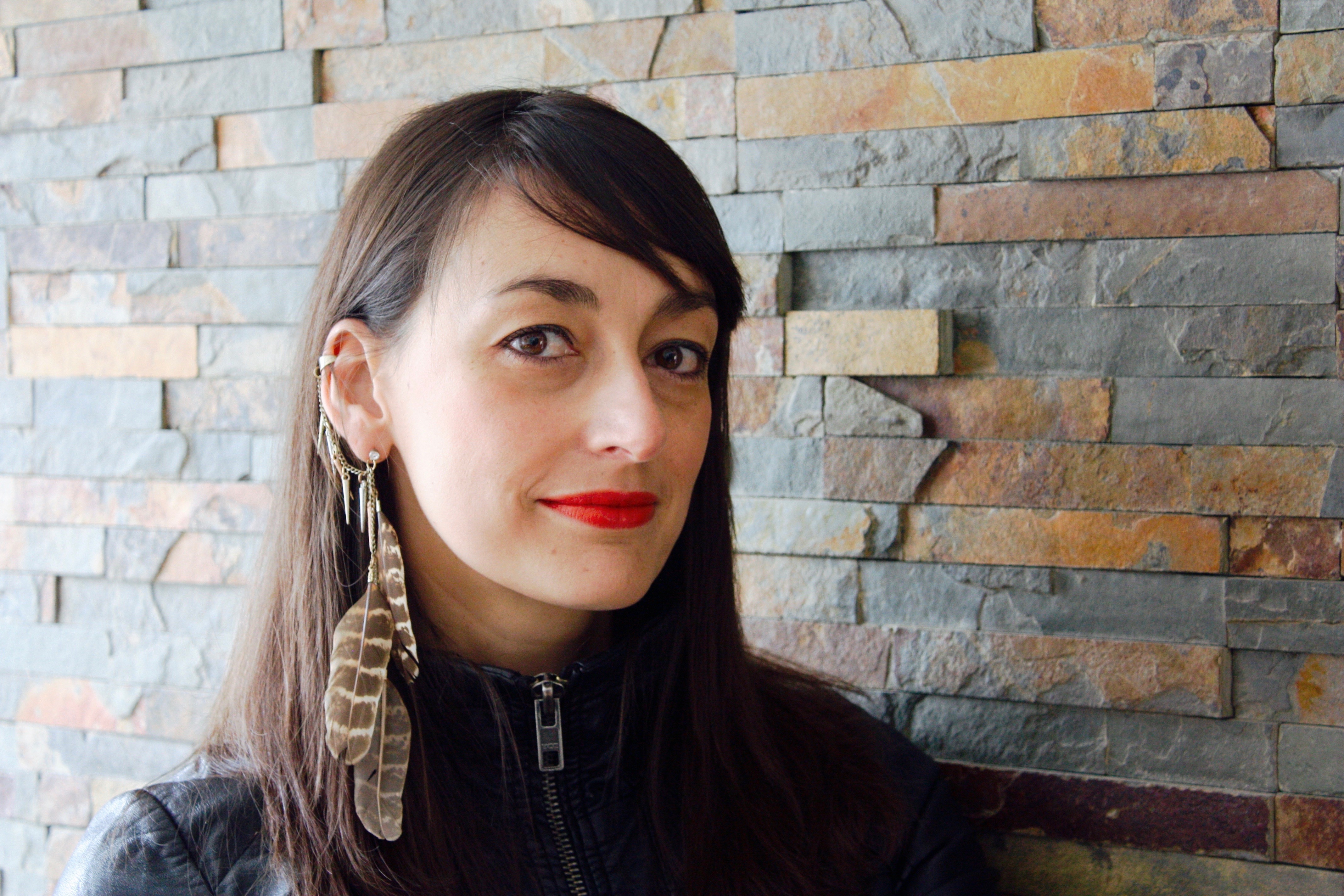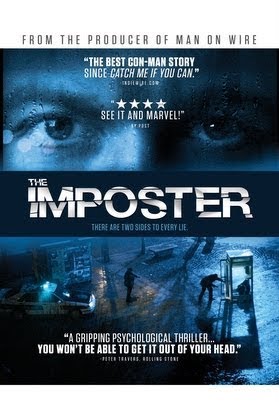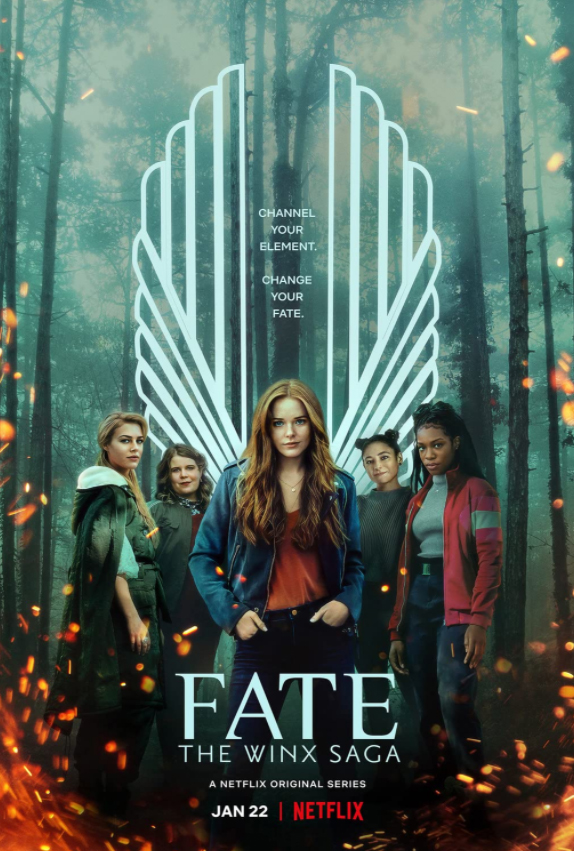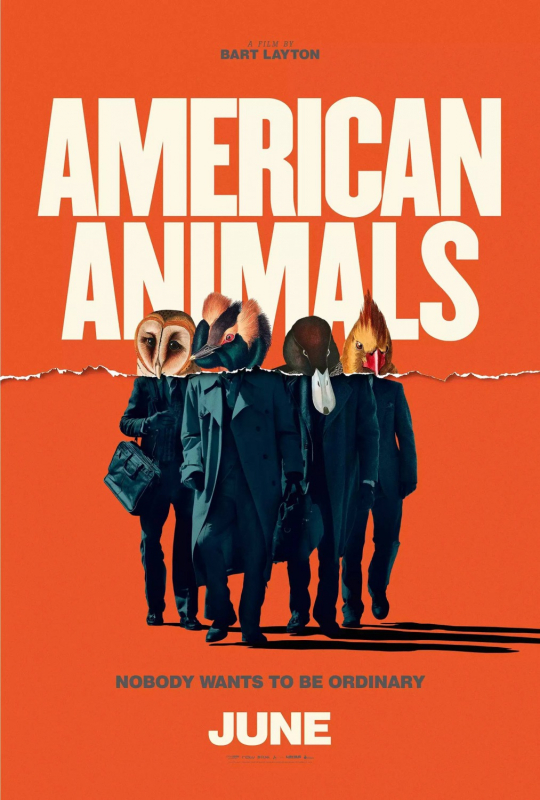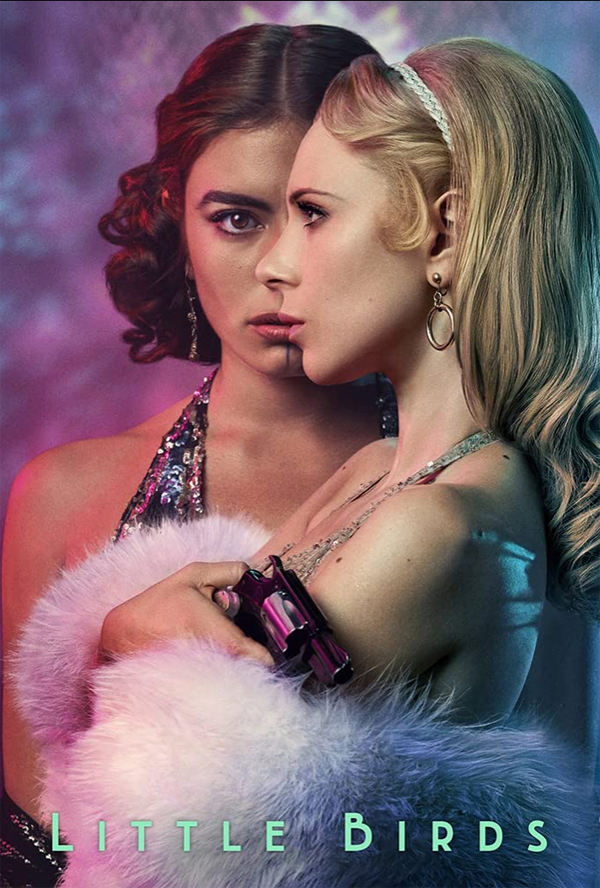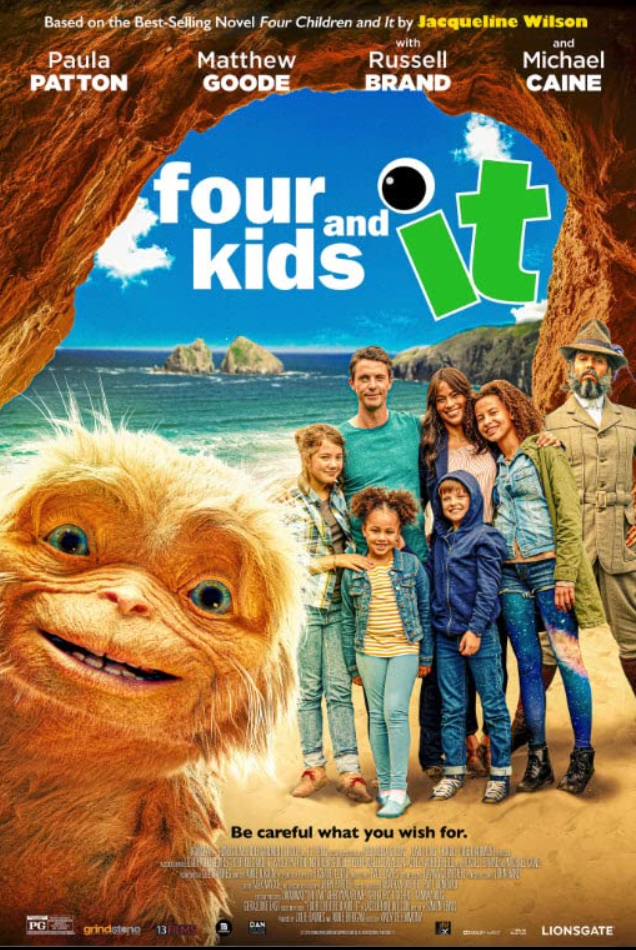January 28, 2021
Anne Nikitin: on Scoring FATE: THE WINX SAGA
Interview by Randall D. Larson
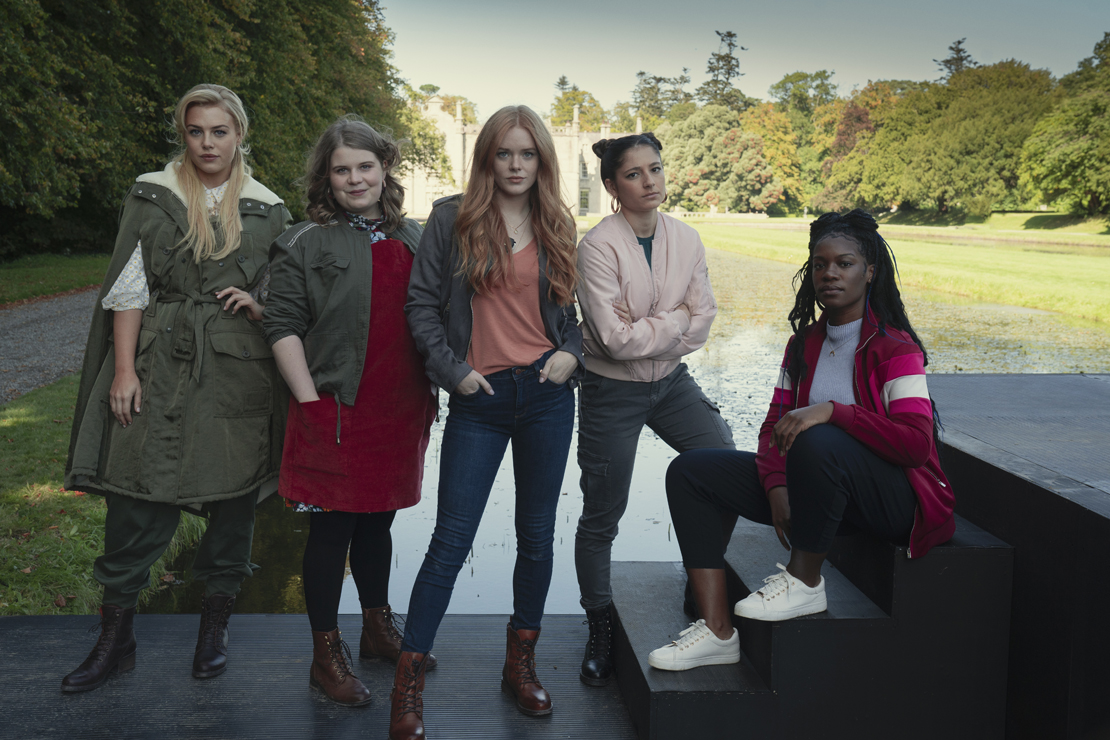
Anne Nikitin is an Ivor Novello-nominated composer best known for her work with director Bart Layton on his BAFTA-winning film THE IMPOSTER and critically acclaimed heist movie AMERICAN ANIMALS, nominated for 11 British Independent Film Awards including Best Score, as well as a Music+Sound Award and Ivor Novello Award. Recent work includes FOUR KIDS AND IT, a family fantasy movie based on Jacqueline Wilson’s novel; THE PALE HORSE, an Agatha Christie series for BBC/Amazon; the Netflix Original thriller LOST GIRLS by Academy Award nominee director Liz Garbus; and ALL THE MADMEN, a movie about David Bowie’s early life starring Johnny Flynn and Marc Maron.
Her latest work can be heard in the 6-part young adult fantasy series for Netflix, FATE: THE WINX SAGA. A live-action reimagining of the 2004-2019 Italian animated series WINX CLUB from Iginio Straffi, the series follows the coming-of-age journey of five fairies attending Alfea, a magical boarding school in the Otherworld where they must learn to master their powers while navigating love, rivalries, deception, and monsters that threaten their very existence. From creator Brian Young (THE VAMPIRE DIARIES), FATE: THE WINX SAGA premiered on Netflix on January 22nd.
Nikitin’s score for the WINX series is an evocative, textural, and magical mix of live instruments and synths that provide an engaging soundscape for the fairies’ Otherworld and the teenage students learning their fairycraft at Alfea, only to have it interrupted by deadly creatures called Burned Ones, whose purpose remains a mystery to be solved. The music forms a rich tapestry of mood, melody, and menace. We discuss this score, and others, in the following interview.
Q: By way of background, what brought you into the world of film scoring, and where did you get your start?
Anne Nikitin: I’ve written music since I was a child. As a teenager I was in a couple of bands, so its always been around. Later I studied English literature and music composition in Montreal at McGill University. I loved reading and analyzing books and stories, and I also loved writing avant-garde music, so I really wanted to fuse the two worlds. I thought film music might be a natural way to go, and so I went on to study film music in London and then it took several years to get my first paid commission. It was quite a hard slog, but I ended up entering a competition the BBC held to find a new TV composer. I entered it thinking nothing would come of it and miraculously I won that competition. The prize was a commission to score a BBC Natural World documentary. It completely changed my life, as I wasn’t getting anywhere until then.
Q: The score that first gave you some attention was for Bart Layton’s 2011 documentary THE IMPOSTER. What can you tell me about scoring this film and what you brought to this examination of a young con-artist who pretends to be the kidnapped son of a grieving family?
Anne Nikitin: That was an incredibly fun film to score because it’s just so bonkers, and Bart is a joy to work with. He’s very intense and he knows what he wants, but he also gives me creative freedom. There’s a real sense of collaboration when you work with him. For THE IMPOSTER, I wanted to go to something that was slightly creepy and slightly tongue-in-cheek as well, because you can’t quite understand how this guy is getting away with all these lies, and there must be something more to it. I started off with a small motif to represent the imposter, and as his lies build so does the music until it just takes off and becomes quite big and orchestral towards the end.
Q: Did the score have an effect on the assignments you got after that?
Anne Nikitin: Yeah, absolutely. It was the big door-opener for me, and then also Bart Layton’s next film, AMERICAN ANIMALS, opened even more doors because that was more drama-based, and then suddenly I was getting calls to do more narrative-based series. So now I felt like I’d landed some wonderful commissions, and I embraced the doc world, and these dramas as well.
Q: What brought you in to FATE: THE WINX SAGA? I understand there was no need to connect this live-action series with the previous WINX CLUB animated series, musically-speaking?
Anne Nikitin: They’re very different beasts and although the live action concept is based on the animated series, it was for a completely different audience. I suppose the audience who watched WINX CLUB are now grown up and need something more adult, and so I wanted the score to also sound more adult and dark as well. There are a lot of moments of light and shade, but also plenty of moments of horror and dread and tension and magic, so it was trying to find a sound that felt otherworldly but could also be moving into the horror trope as well as offering some moments of comedy.
Q: How closely did you work with the show’s creator Brian Young and what did he have in mind for establishing the color and placement of the music?
Anne Nikitin: I worked very closely with Brian Young, in fact when he was in London before lock-down I would meet with him weekly. There was a team of us—the producer, the music supervisor, Brian, and I—and we went through the music quite intensely together. It was really a wonderful collaborative experience doing that. I just felt like I was part of the team right from the beginning; he brought me on board early in the process, while they were still shooting and just as they were about to start editing. So I had a lot of time to get creative and to try something that was not based on any guide music that they would have put in at that time, and Brian’s instructions were very clear but not restrictive, so it was really wonderful working with him. And then when lockdown happened and he went back to L.A. we had weekly music meetings for a long time all through COVID until the series was finished.
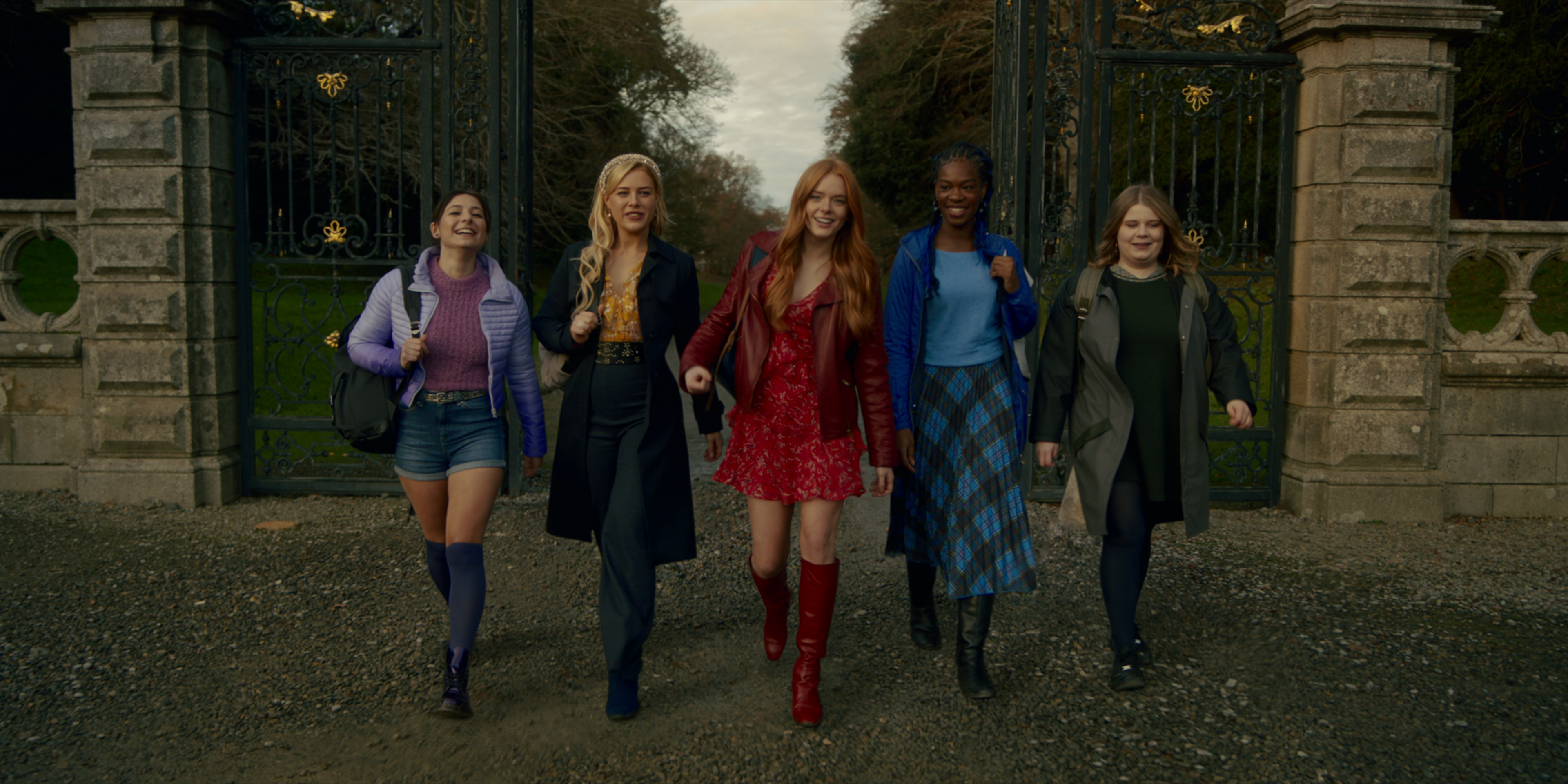
Q: How would you describe your approach to delineating and contrasting the fantasy environments between the First World and the magical Otherworld?
Anne Nikitin: We didn’t actually go into contrasting the two. It was always based in magic. There are only a few moments where you’re going into the reality. I suppose it was a bit more edgy going back into the real world, I should say, a bit more sort of electronic, lots of synths used, but really it was sort of all bound together as one cohesive score, the two worlds. It was more about finding themes for the characters and their experiences, what they go through and how the main character, Bloom, grows as she learns to control her magic.
Q: Would you describe how you orchestrated the characters’ themes to identify their particular magical power?
Anne Nikitin: We wanted a theme for each fairy, which I believe is what was done in the animated series. Because they have these distinctive magical powers I wanted to focus on what their powers meant to me if I translated them through music. For Bloom, who is a fire fairy, I came up with a variety of themes for the different experiences she undertakes, and for her I mainly focused on harp, piano, strings, and big drums when she becomes more powerful. For Terra, the earth fairy, I used otherworldly vocals because I imagined how the plants she grows that sprout through magic might sound if we were to hear them. For Musa, whose the thought fairy, I had a friend build me a library from a bunch of prayer bowls that I’d bought a long time ago on my travels. And so I created textures for her using those prayer bowls. Aisha, the water fairy, has a harp motif with a quite watery feeling, and for Stella the light fairy I also used harps but in a more creepy way, because she’s always concocting something; and then I put some synths over her as well to inject a feeling of light; it’s a sort of magical light sound for her.
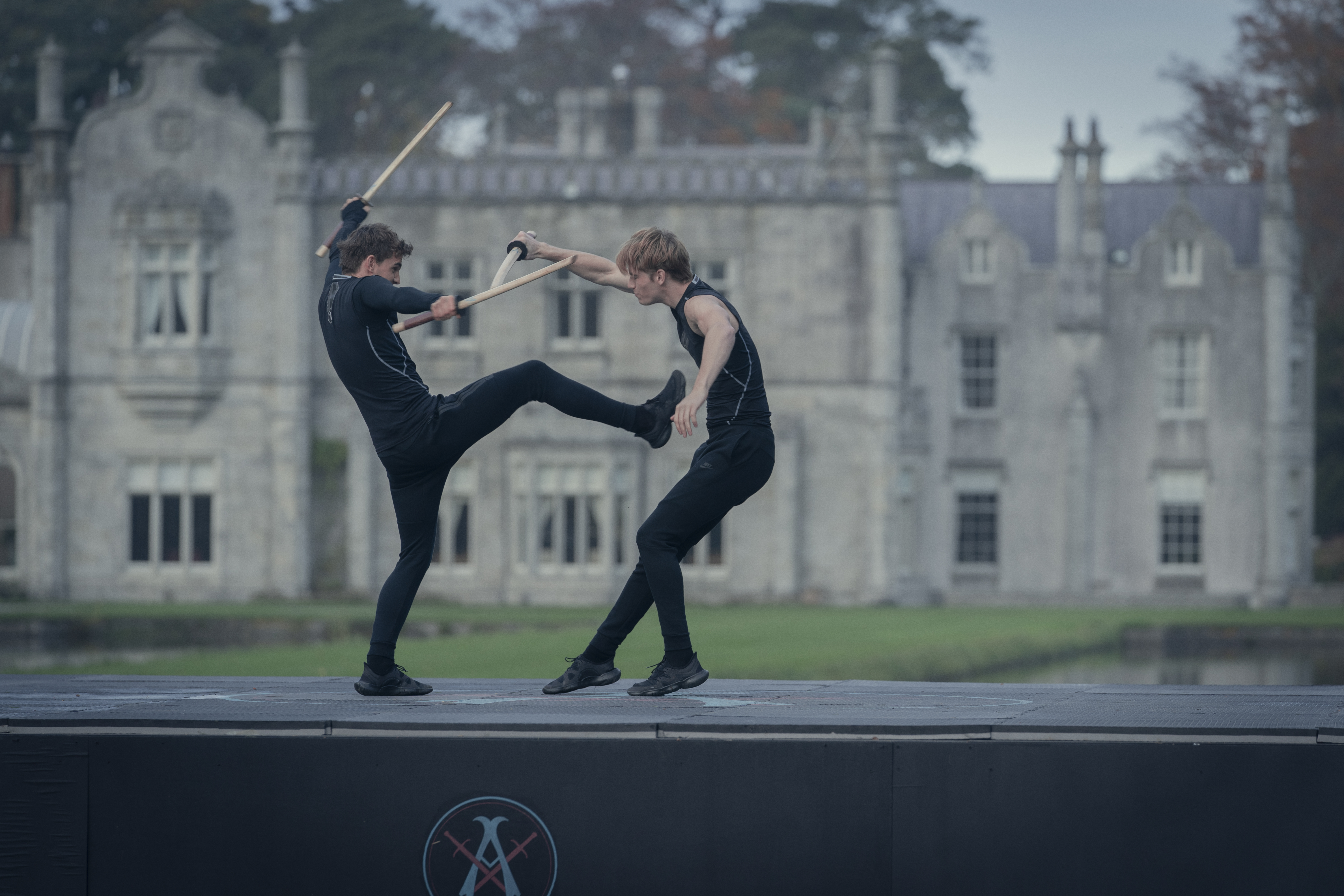
Q: How did you integrate those themes when they got together as a team?
Anne Nikitin: That’s a good question! I did integrate those. I would normally follow Bloom mostly when it was her experiences; when they were together as a team I would focus on the character who’s being focused on, the character who’s got the problem or the issue. That’s when I would bring in their theme.
Q: What instrumental palette did the project’s budget permit for this series?
Anne Nikitin: We never wanted to go big, orchestrally. The budget would never allow for that, but we didn’t want that anyway. I wanted to have live elements, definitely, I wanted to fuse my classical background with a more contemporary synth sound, especially because there’s a lot of commercial music, as you would have heard, and a lot of that commercial music is very, very contemporary pop music. I wanted to make sure that the score didn’t stick out and feel out of place in terms of that, so I made sure that I also had quite a contemporary sound to the score with some synth beats and things like that. So I focused on having an ensemble of five strings, a harp, and piano, and I fused those with the synth world. I love harp. I always tend to use it—I don’t know why, I’m not a harp player—but I found it to be an incredibly versatile instrument and it doesn’t have the weight of the piano, so it’s a good instrument to be used.
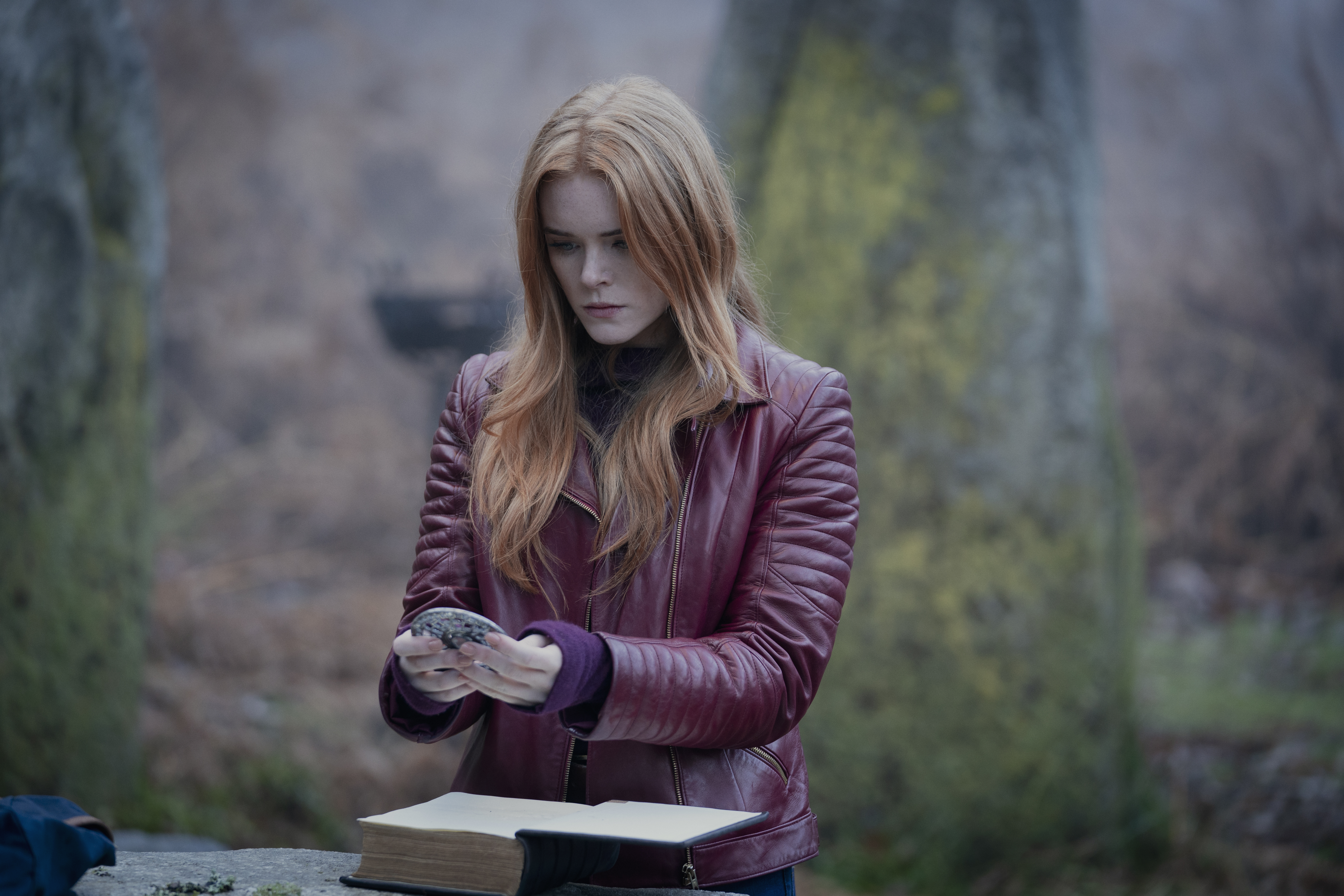
Q: Regarding the songs used in the film, how did that affect finding places for dramatic scoring in the midst of the many pop song bits that appear in the film?
Anne Nikitin: That was sort of an unusual experience for me, as I was privy to all of the conversations surrounding the commercial music. The music supervisor, Matt Biffa, was always on the music calls with me, so he could hear where score was going to go and I could hear when commercial music was going to go, and the type of commercial music that they were looking at that would suit the film and that was clearable. So I knew what sound palettes they were using and then I could decide how to write my score in and out of these commercial tracks without sounding jarring. So that was a really good experience. Usually they just stick the commercial music in and some times you don’t know what they’re going to put in, but in this way it really worked.
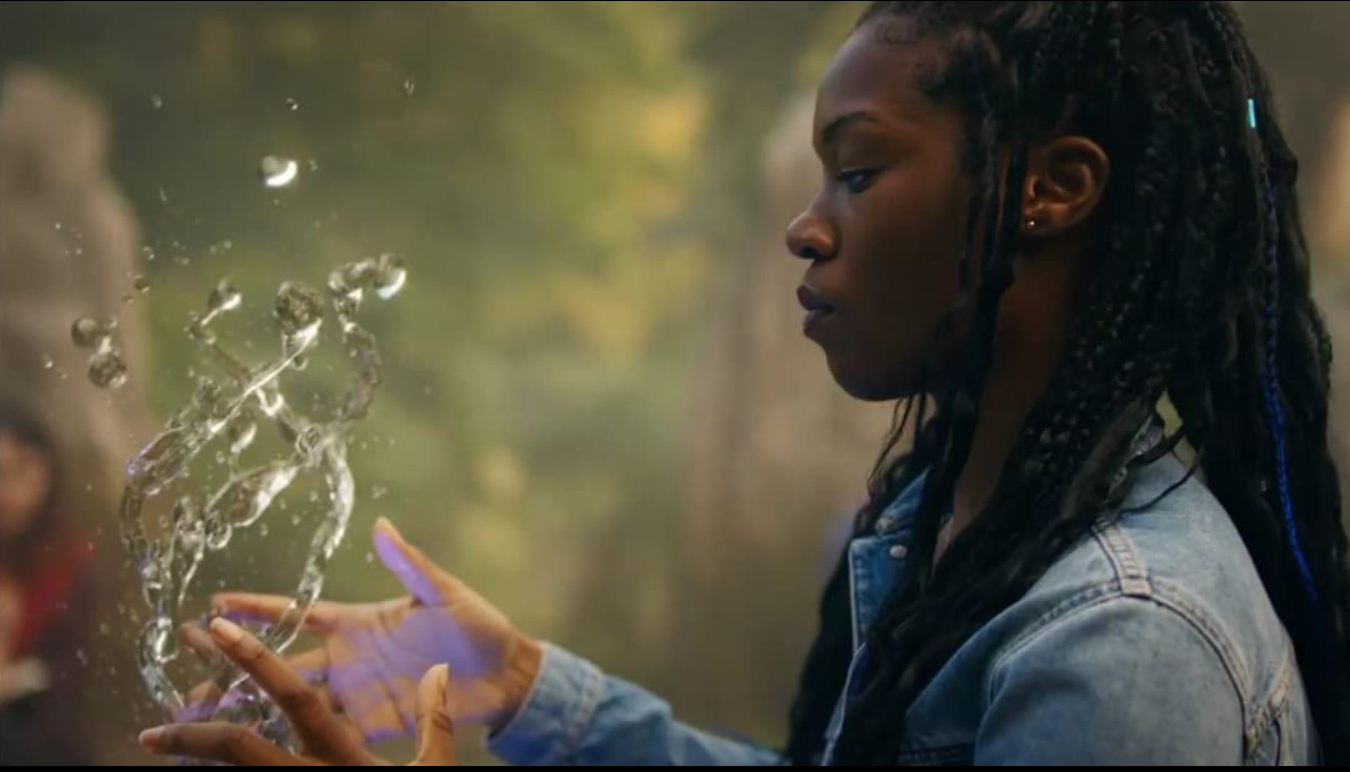
Q: How did you treat the darker moments such as the attacks by the Burned Ones? You’ve got a great moment of orchestral crescendo where Bloom takes on the Burned Ones that really sells that moment of triumph.
Anne Nikitin: For the Burned Ones we wanted to have some proper action there and to feel deep and guttural and nasty. Towards the end we finally wanted to have a music crescendo so I worked on having music that was more powerful and much more positive for the climax of the Burned Ones action sequences. Whereas before it was quite rumbly and dirty; in the climactic transformation cue it bloomed and blossomed into something bigger and more powerful and more positive.
Q: When you’re scoring a magical fantasy film such as this, does the musical score have a unique responsibility to assist the audience with their suspension of disbelief towards the story’s fantastic and monster elements that might not be present in films of non-fantasy genres?
Anne Nikitin: I think so. I think it is important to feel that the score is of another world, although we didn’t want to go too twinkly and magical. It wasn’t that kind of film. It had to feel more grounded because essentially these are very normal teenage kids going to boarding school with normal teenage problems and experiences that you and I and everybody can relate to, but they’ve got the element of having magical powers and they’re fairies and they have to fight monsters, and so we wanted the score to definitely feel that it’s of another world, but also to feel a bit more grounded. So Brian absolutely forbid anything too twinkly and magical fairy-cliche’d, he really didn’t want any of that, and I completely got where he was coming from.
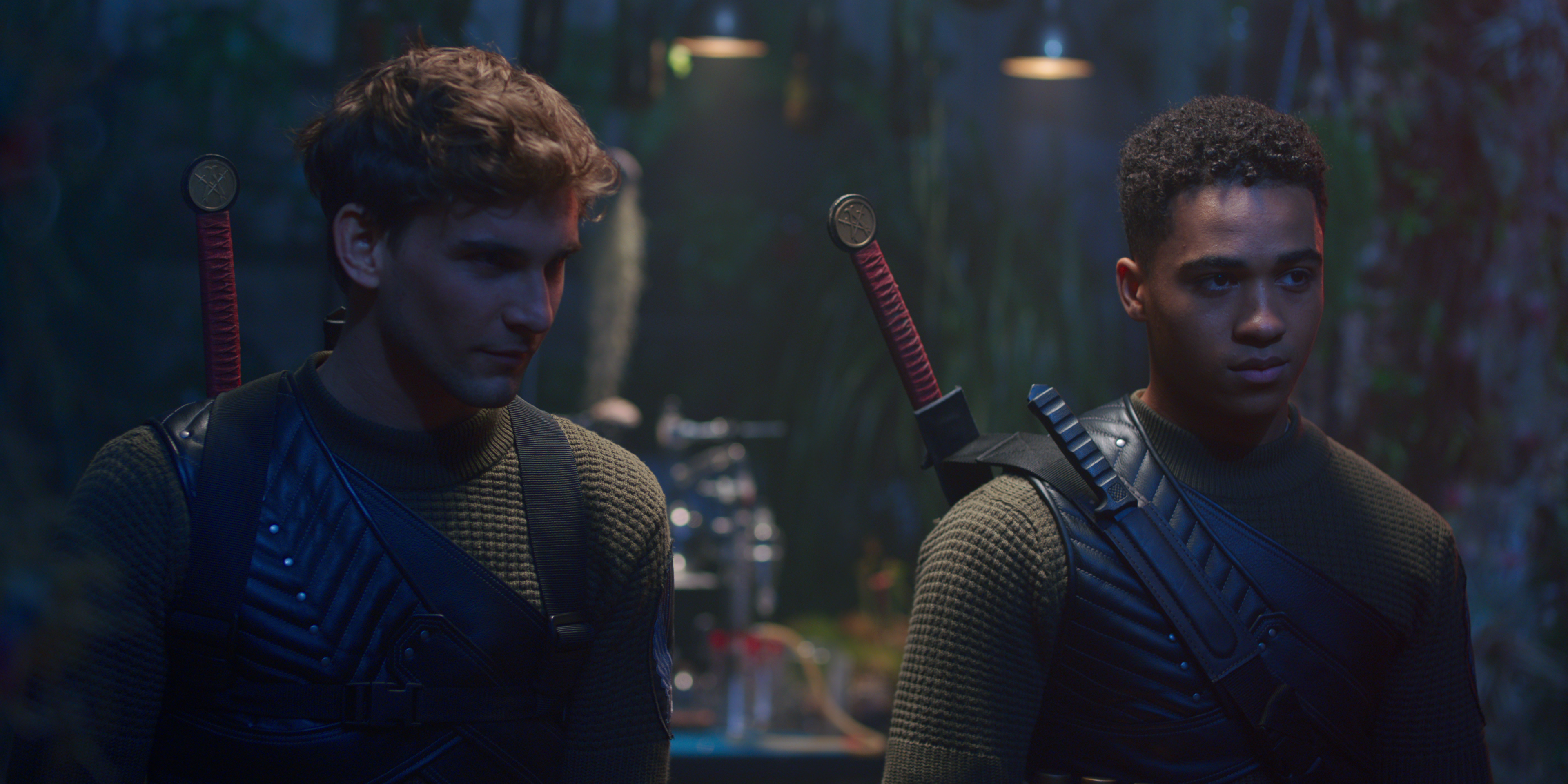
Q: Is there a particular moment (or moments) in the film in which you are particularly pleased with how the score worked out, or a scene that may have been initially difficult to nail down?
Anne Nikitin: Yeah. It was one of the first scenes I scored, and I was daunted because I was just starting and you never know how people are going to respond to what you have done. It was in episode one and Bloom goes into the forest and she tries to practice her magic and it just gets completely out of control. I call the track “Fire Hands,” and it’s quite a long sequence. It starts off very slowly, a very sort of piano/strings moment and it grows into her theme and the synths kick in, and that track made Brian cry the first time he heard it! So I thought, if I can make a grown man cry I think I’ve succeeded, and he was very, very pleased with that track, and that became Bloom’s theme.
Q: What was most challenging about scoring this show?
Anne Nikitin: Definitely the lighter moments! There are always moments in each episode where the Winx get together in their suite and it’s sort of light and happy and there’s some moments of comedy, and I suddenly had to pull myself out of darkness and create something that was a lot more light, because the mandate from Netflix and from Brian was we didn’t want it to be dark all the way through, it definitely has to have moments of lightness and comedy. And I just find comedy a little bit harder to score, so it was trying to find the right place between clichéd comedy, which I didn’t want to go into, and not making it too dark either.
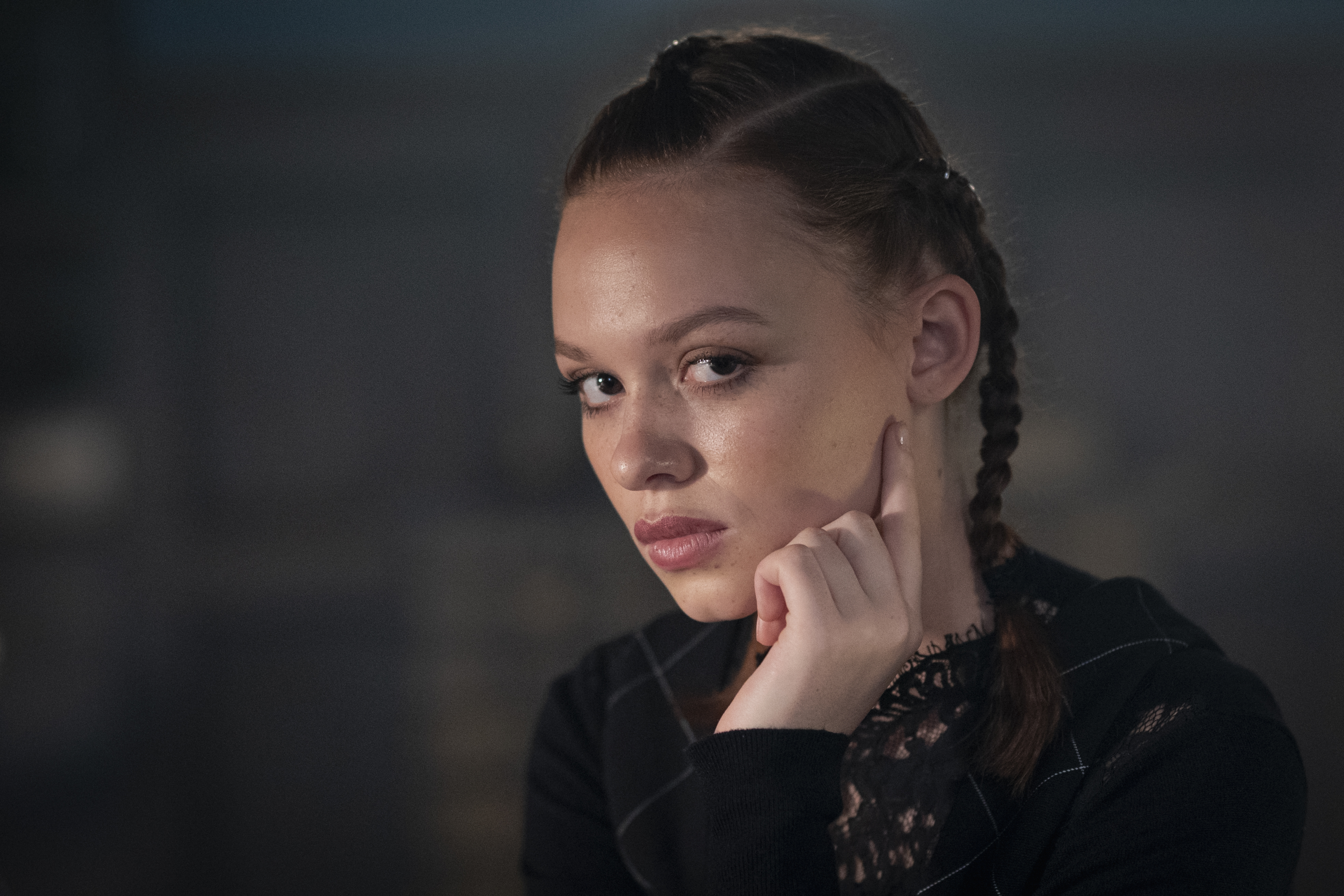
Q: Is there or will there be a soundtrack album of your score?
Anne Nikitin: I’m really hoping so. We’re talking to a label now, and hopefully Netflix will give the green light. We’ll see!
Q: Since THE IMPOSTER, you’ve scored a number of documentary films for Bart Layton as producer over the years, including the 2018 biographical drama AMERICAN ANIMALS, which you’d mentioned earlier. How would you describe scoring this project?
Anne Nikitin: That was a unique project for me because it was a unique film. It really crossed the line and blurred the boundaries between documentary and drama. I’ve heard people say “It’s narrative,” and then I’ve heard lots of people call it a documentary, and I think people don’t know where to place it. There were so many elements to that film that it was quite a difficult one to get into, but luckily Bart likes to bring me on board very early in the process, so that gave me a lot of time to experiment with where we should go. We were wondering how dark the music should be, and we realized it was too dark so we had to lighten things up. I got there eventually but it was also the dramatic moments versus the documentary moments. But once I got the film pilot going and Bart was happy with it, then it was clear sailing from there. But it was trying to navigate these two worlds, between the doc and the drama, and then also just trying to find music that was quite light and comedic for some of the moments and then delving into the real darkness when reality takes over.
Q: You’ve also recently scored the British TV series LITTLE BIRDS, adapting short stories of Anais Nin. What can you tell us about scoring this show?
Anne Nikitin: That was really fun, I believe it’s coming out in America next month. I loved that show and working with the director on it. It was something that was completely different for me. I usually write quite dark scores for dark subject matter; this one was lighter and the direction I was given from the director was to “go bonkers!” And because it’s a period drama set in the ‘50s in Tangiers, which was a melting pot for what were deemed at the time as sexual misfits and people who wanted to have sexual freedom, people would go there from the West, so I had to fuse Moroccan music with Western music, delving into that period but also doing something completely bonkers. Sometimes there’s a movie within a movie, so I was creating musique concrète pieces and I was able to use Anais Nin’s actual vocals from interviews and put them into my music. So it was a little bit of an experimental score, but I think it lent itself well to what the series was about.
Q: The 2020 film FOUR KIDS AND IT that you scored has an interesting pedigree, being based on the novel Four Children and It that was based on the early 20th Century children’s novel Five Children and It which was made into a movie called Five Children and It in 2004, which the 2020 film is apparently a sequel to! Would you describe how you augmented this somewhat younger children’s fantasy with music?
Anne Nikitin: This was again something completely different for me, writing a children’s film score, and I loved it. I had such a great time. I was very lucky with the team, the director and producers on that one, and we had a budget for an orchestra, which was nice. I just wanted to create something which was, again, otherworldly, because there’s an alien creature there, and I basically just sat in my studio and played a whole bunch of instruments that I can’t play! There were instruments that I picked up on all my travels as a child—I had a whole bunch of flutes and I was just playing them and coming up with a theme for the Psammead, which is the creature there [voiced by Michael Caine] and then tinkering with things and then sticking those over orchestral music, just to try and give a different quality to the typical orchestral score.
Q: I understand your current scoring project is for a German drama called LOSGELASSEN [“Let Go”]. Is there anything you can tell us about that?
Anne Nikitin: That’s a film I’m doing with my cousin, she’s making her feature film debut, and I’m very excited about working with her. I haven’t started on that one yet. I’m scoring that with Tom Kelly, who’s my orchestrator and we’re doing that together.
Q: I’ll definitely look forward to seeing and hearing that when it’s in release! Thank you so much for your time speaking with me about your work!
Special thanks to Andrew Krop and Kyrie Hood of White Bear PR for facilitating this interview.
For more information on the composer, see her website at https://www.annenikitin.com/

